This fall I’ve had the opportunity to attend several events at which I’ve learned great information on health and wellness that I’m using at home and at my children’s school. My reaction to these learning opportunities tends to be first elation, then the heavy weight of responsibility, thinking about all the things I need to research and do for my health and my family’s health, and then the desire to write about what I’ve learned, both to process it for myself and to get up here on the site.
And yet, what most of those events have had as their fundamental lesson is the importance of reducing stress! And the importance of cultivating an atmosphere of gratitude. So rather than bemoan the fact that I haven’t yet done in-depth reporting on all of these events, I’m going to shift my perspective to consider it a gift that I got to go to them and that I can share them with you in this fall recap.
Okay, I’ve rolled up my sleeves so here we go!
The fall health and wellness season launched for me at the end of the summer, when I gathered five other panelists to address the topic of “Supporting Children’s Emotional Health” with me at Holistic Moms Arlington/Alexandria’s August meeting.
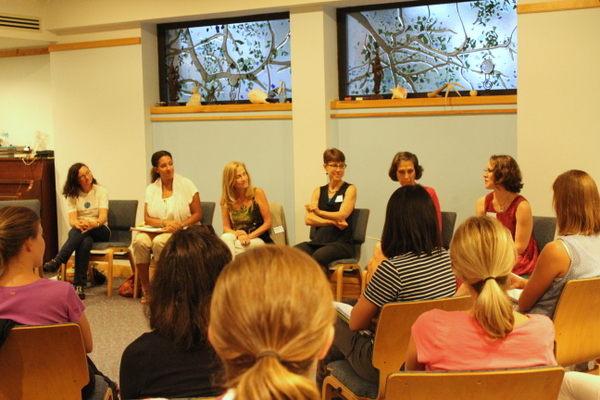 We talked about positive parenting, calming ourselves and modeling healthy coping strategies for our children, food as trigger or healer, energy healing modalities (Reiki, Accunect and hypnotherapy) and bodywork (craniosacral therapy, chiropractic and massage), spiritual coaching, and more. We then did a daytime meeting repeat in October, at which got another demo of Accunect, read the children’s book Anh’s Anger and talked more about our challenges and shared strategies.
We talked about positive parenting, calming ourselves and modeling healthy coping strategies for our children, food as trigger or healer, energy healing modalities (Reiki, Accunect and hypnotherapy) and bodywork (craniosacral therapy, chiropractic and massage), spiritual coaching, and more. We then did a daytime meeting repeat in October, at which got another demo of Accunect, read the children’s book Anh’s Anger and talked more about our challenges and shared strategies.
Much of that emotional health wisdom was echoed at the September Holistic Moms meeting where Dr. Ben Hopsicker of Alexandria Wellness Center and Michelle Winters of SleepWell Sleep Solutions talked to us about the importance of sleep. We discussed the many factors that interfere with quality rest — including looking at screens before bedtime, which is a particularly troublesome problem for teens — found out just what our brain is doing during different phases of rest, and strategized ways to address our sleep challenges.
Ironically, I had to get up early the very next morning to make it into DC for the 12th annual conference of the Mid-Atlantic Center for Children’s Health and the Environment, or MACCHE.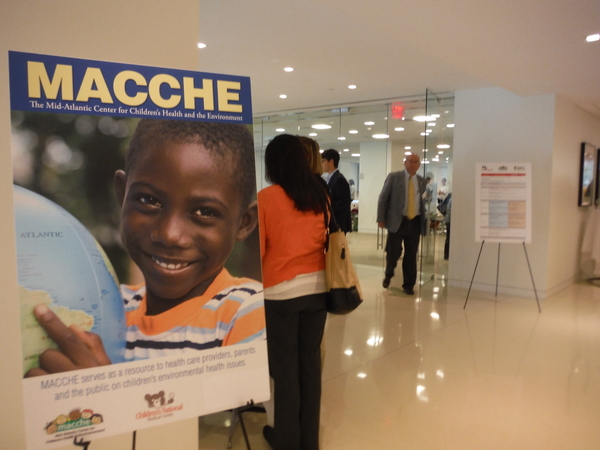 This year’s event had two tracks, one focused on Greening the Medical Office and the other on “Creating a Healthy School Building,” which I attended. In its own way, this event was about mindfulness, too:
This year’s event had two tracks, one focused on Greening the Medical Office and the other on “Creating a Healthy School Building,” which I attended. In its own way, this event was about mindfulness, too:
- Taking care to pay attention to what products are used in schools
- Considering the placement of the school (hint: in a former thermometer factory and in a former auto repair facility are not good!)
- Considering the architecture of the school with an eye to comfort and aesthetics but also to future maintenance and thus health issues
- Knowing how environmental toxins can affect children’s physical health, emotional health, and ability to learn
It was both exciting to learn about the innovations happening in some places and disconcerting to learn about all the issues that need to be addressed to ensure that children who spend 7+ hours in one place are not doing so at their detriment. The organization now has videos available of the presentations.
A week later, I spent the day at the first National Kids Yoga Conference, which I covered here in more depth. It was very inspiring to learn that so many people are working on giving our children the tools to grow into calm, healthy adults. I learned about numerous strategies in addition to key insights about the mind/body connection from so many practitioners and researchers.
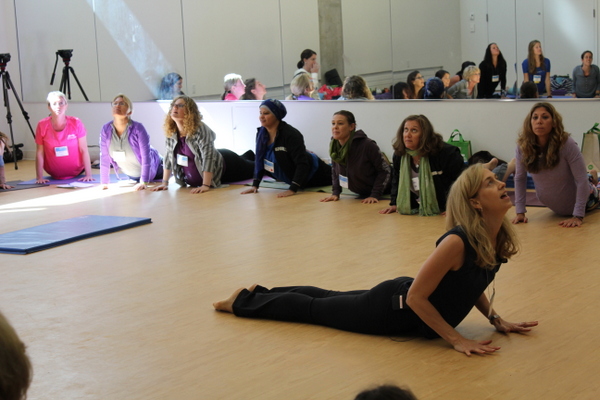
In October, I tried to put in practice some of what I learned about balance and so missed the Pathways Natural Living Expo and the first Natural Awakenings Healthy Living Expo when going would have caused scheduling challenges and thus stress for me and my family.
I did, however, make it to the morning of a day-long workshop with Kim John Payne, the author of Simplicity Parenting. At the event, organized by Acorn Hill Waldorf Kindergarten and Nursery, Payne shared insights about how different kinds of clutter and complication set up our children to feel ungrounded and unfulfilled, and he offered strategies for coming back to a more mindful way of living.
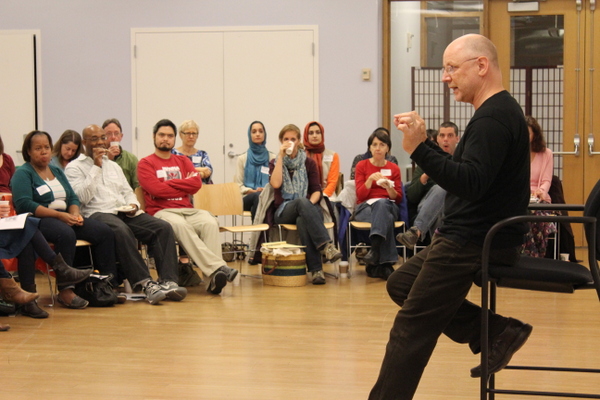
With so much going on, I almost didn’t go to the talk at Alexandria’s Commonwealth Academy by Kelly Dorfman, author of Heal Your Child with Food (previously titled What’s Eating Your Child). I’m so glad I did, though! Dorfman did a great job of addressing all the questions in the audience — made up of school parents and lots of outside visitors — and also conveying many of the key points of her book. She discussed how many small triggers can layer on top of one another to cause symptoms and encouraged parents to become detectives considering not just food but also molds, chemicals, additives and other environmental triggers like pesticides and animal dander. All these issues and more can contribute not just to digestive issues or more typical “allergic” symptoms but to skin problems, learning difficulties, mood disorders, brain fog, issues with coordination, and more. (I’ve almost finished this recap and will get it up with a book giveaway before the end of the year!)
I’ve long admired the work of Arcadia Farm to bring local food to underserved populations and to educate schoolchildren on urban agriculture. My son’s teacher told me his class will be taking a field trip there this spring for a unit on bees. At its fall festival, my children got to see the farm’s mobile market, roaming chickens, corn fields and gardens, and to grind corn, jump in a sack race and make jewelry out of flowers.
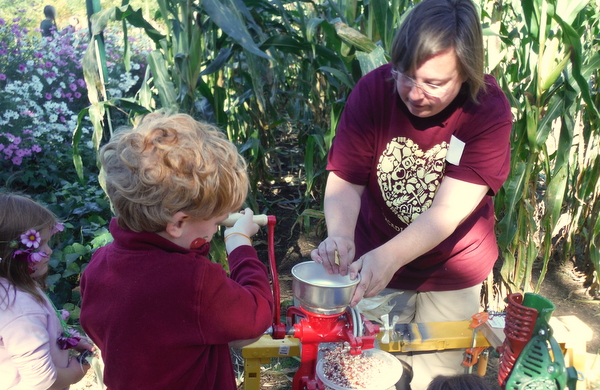
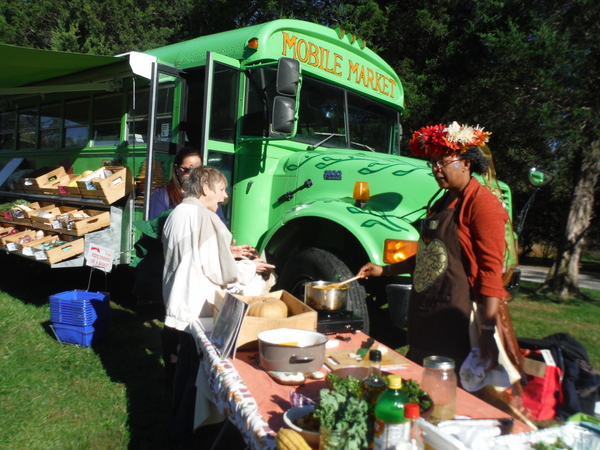
The following week, I heard more nuggets of wisdom about digestion from Dr. Sean Woods of The Chiropractic Associates and Cindy Santa Ana, Board Certified Health Coach with Unlock Better Health speaking at Holistic Moms. They covered everything from the nuts and bolts of our digestive organs to nutrient-dense food to supplements. Dr. Sean said that when we look at older people who have lopsided bodies, we’re likely seeing someone who’s had undiagnosed food sensitivities for years. Leaky gut, or intestinal permeability, is at play with many allergies, he said, and we need to pay attention to what we eat and also how we are compensating for discomfort before we develop restrictions and scar tissue. Santa Ana shared her story of infertility, multiple miscarriages, and autoimmune issues and how her life was revolutionized by diet changes.
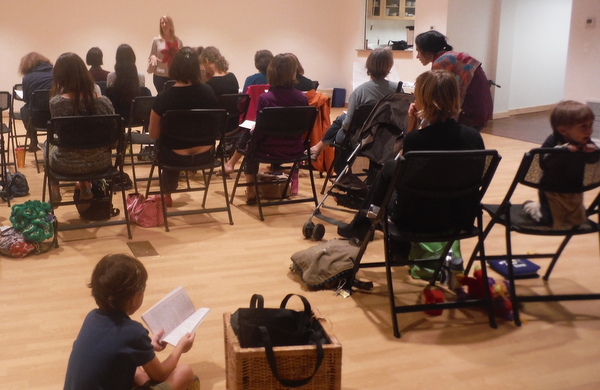
Later in October, I had the opportunity to take my son to a four-day workshop with renowned Buteyko Breathing Method instructor Patrick McKeown, author of Close Your Mouth. McKeown was addressing a group of dentists and other healthcare practitioners who are participating in a mini-residency program put together by Dr. James Bronson of Bronson Family Dentistry in McLean, Virginia. Bronson practices what he calls “transformational orthodontics” and works with parents to understand the connection between mouth structure and overall health and wellness. Certain conditions — including tight frenulums and less than ideal positioning of the bottom and top jaw relative to one another — can cause a child to mouth-breathe. That, in turn, can contribute to a host of problems including asthma, bedwetting, learning difficulties and more.

McKeown, who was on medication for asthma for 20 years before learning the Buteyko method, talked about the higher volume of air taken in by mouth-breathers as a problem and explained how failing to filter air through the nose can increase the likelihood of infection and illness and changes the ideal ratio of O2 and CO2 in the body. My son was one of six children — most of whom had asthma — who practiced exercises to clear their noses and help train their brains to close their mouth. The children made significant strides in just the four days that they spent 90 minutes practicing and learning how this approach would help their health.
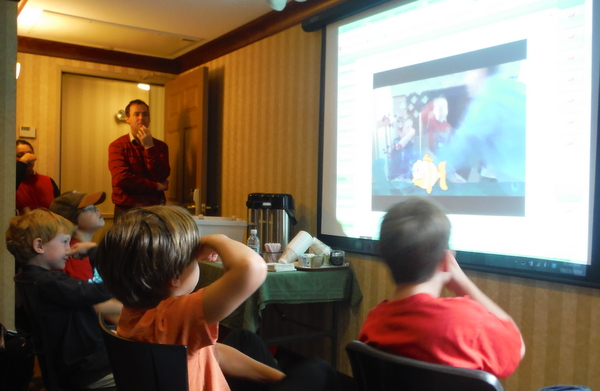
At the end of that week, I attended Food Day at the Loudoun campus of Northern Virginia Community College where Polyface Farm‘s Joel Salatin and Miriam Nasuti of Farm-to-Fork Loudoun gave keynote addresses in the morning and served on a panel in the afternoon, after participants circulated among exhibitors that included farms and a variety of vendors, including Mindful Healthy Life.
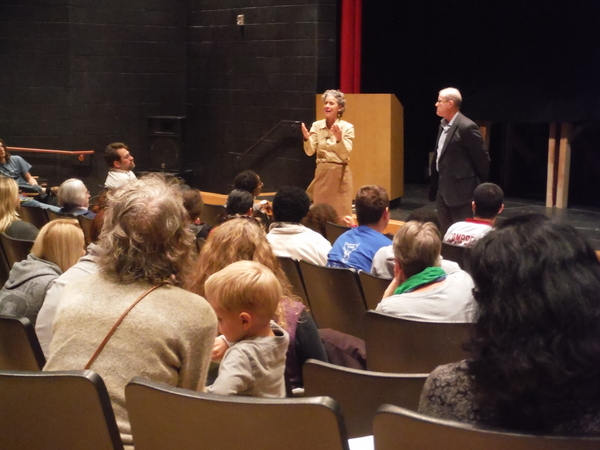
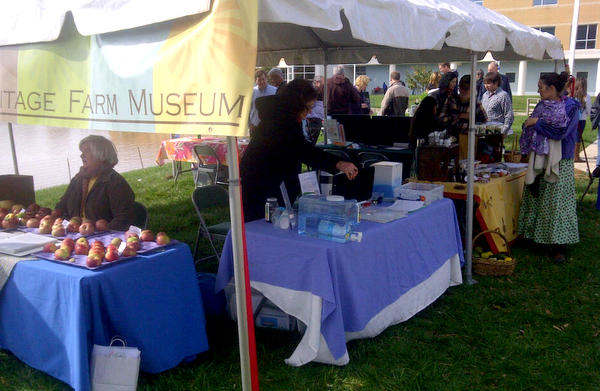
At the Food Day celebration, a colleague — Pam Snyder of March’s Everyday Health Conference — gave me some materials from a talk on Lyme Disease that I’d missed earlier that week due to a school commitment. It was a good thing, because, when we got home from camping that weekend, we found a tick on my son. I was glad we had handy the information about safe removal and the sizing chart that told us it was an adult, which carries a lower risk of disease transmission than a nymph. It took us a few days and some doctor consults to figure out how to proceed, but that bit of knowledge was at least helpful for my anxious son (and his mom!)
As the calendar flipped to November, our school’s garden work day was canceled due to plumbing issues at the school, so we got to go to the Potomac Crescent Waldorf School fall festival, and I got to attend a little more of the Take Back Your Health Conference than I expected. Dr. Teresa Fuller, a pediatrician at National Integrated Health Associates, talked about …. The following day, I learned more about the science behind the Paleo diet from The Paleo Mom Dr. Sarah Ballantyne, author of The Paleo Approach, and to hear some great practical tips on making it work for your family from PaleoParents.com‘s Stacy Toth, author of Eat Like a Dinosaur, Beyond Bacon, and most recently, Real Life Paleo, which takes the three-pronged approach of Swap, Remove, Heal.
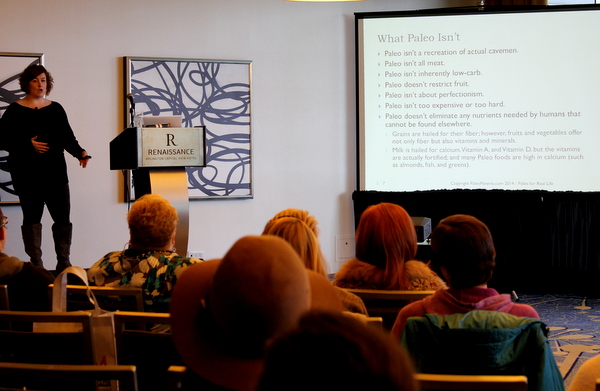
Ballantyne’s talk was heavy on the science and deserves a much longer treatment than I can give it here, but suffice it to say I will be delving more into her work and preparing to go on the (grain-free, nut-free, egg-free) autoimmune Paleo diet she calls The Paleo Approach after we get back from holiday travel! (Giveaways to come on that, too!)
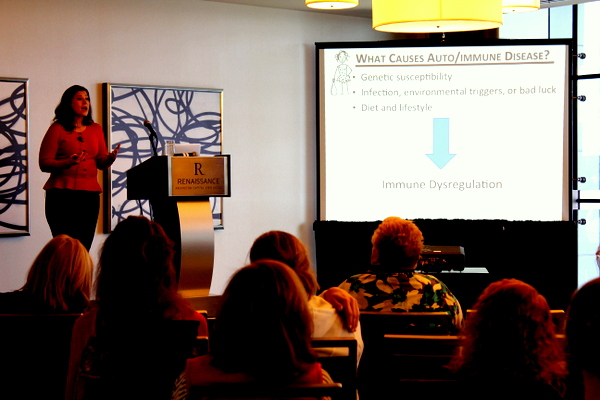
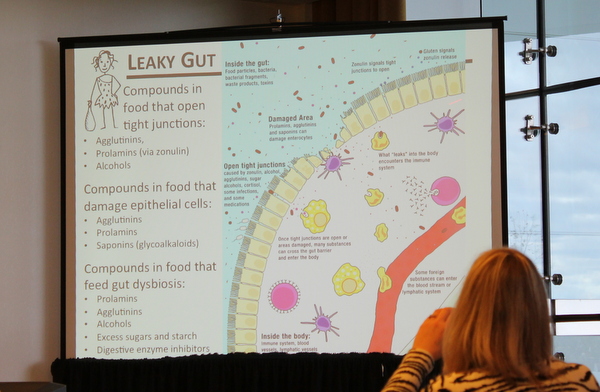
At TBYH, which I wrote about here, I also got to meet in person the brains behind DaoCloud, a new online holistic health network that is about to launch in beta. It’s sort of a cross between Facebook, My Space and Goodreads for holistic health junkies and practitioners. Members who are not professionals in the field can register for free to see other members’ profiles listing their favorite studios, articles, websites and practitioners. Those who do practice can join now for an introductory rate to get a profile page that can connect them to other professionals and to potential clients. People are joining from around the country, but the developers are focusing right now on building up their base in the Metro DC area.
I didn’t make it to Indianapolis for the Weston A. Price Foundation annual Wise Traditions conference in part because I knew I’d need to rest up for the Freedom for Family Wellness Summit that the International Chiropractic Pediatric Association was holding in Reston. I wrote about the event here before it started and hope to have some follow-up guests posts covering some of the talks. It was an amazing gathering of over 800 people, many of whom were chiropractors and naturopathic doctors. But there were also a lot of parents, birth activists, and other health advocates. It is always wonderful to see midwife Ina May Gaskin and hear her fiery and witty words of wisdom, and to have the chance to thank her for all she has done for women and babies.

This year, it was personally useful for me to talk to Karen Brody, author of Birth, the Play and founder of the BOLD method for birth, whose work with Bold Tranquility is now centering around helping women heal physically and emotionally through rest. She is has a “recharge series” mobile app available now you can try for free and an online app rolling out in early December. Her motto now is: “Chuck perfect.” She’s also a local DC mom, and I’ll share more about her work soon.
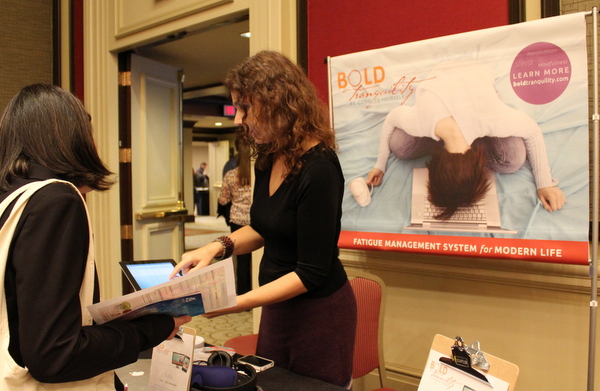
The conference closed with a presentation by Joe Dispenza, who put forth some pretty amazing anecdotes bolstered by science about the mind/body connection. He talked, as many people this fall have, about how we are living all the time in a hyper -aware state that used to be used only for times of crisis and what that is doing to our brains and bodies. I was enthralled to see the brain scans and brain wave charts he shared of people before, during and after meditation and to hear about transformative experiences with people healing from chronic conditions.
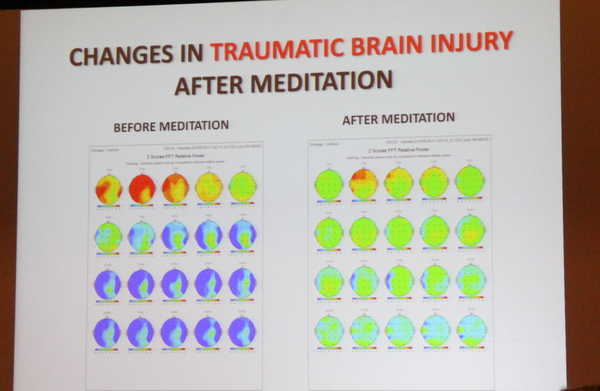
I had the opportunity to attend the ICPA conference as a table representative for Holistic Moms Network. Four days later, my chapter had our November meeting, and it’s always a struggle for me to get out of the house with all of our materials to set things up. I tried to keep that perspective about how small and inconsequential it really is if I leave the house a little messy and miss a night of putting my kids to bed. It’s so easy to beat myself up for all the times I do things for me and fret over what harm I’m doing to my children by not being everything to them all the time. But really what serves them best is a mom who takes care of herself, as we were reminded at the meeting led by Alexandra Hughes of The Bliss Space.
As we talked about the importance of community and the problems of isolation, you could almost feel the stress melting off our shoulders. Just hearing that so many people faced the same challenges and frustrations was a powerful way to distance ourselves from what previously seemed like just our own stuff and instead look at the wider context of the world we are living in and consider how we want to be in the face of it.
One thing we agreed is that we want to be grateful and, in so doing, cultivate a spirit of gratitude in our children.
So, with that, I’ll say I’m grateful for having been able to learn so much the past few months, to share what I can, and to have the reminders to keep perspective and to seek help when that starts to get fuzzy. People may say a lot of things, but one I don’t want to hear or believe is “Fuzzy is the new clear.”
So, let’s take a cue from the trees shedding the leaves they don’t need anymore to let go of what is not serving us, and, when the going gets cold and rough, realize that it’s just a season that will itself turn into something else soon enough.

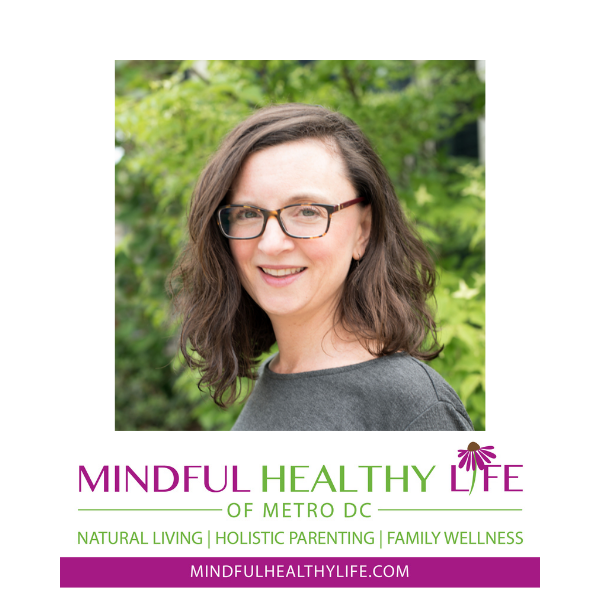
Jessica, what a great job you did covering all the major events of the fall. Thank you!!
Hi, Jessica, what a great newsletter, & what a busy fall you have had. I was reading along & said to myself, “who’s writing this?” Given the emphasis on parenting & various mentions of Holistic Moms Network, I guessed it was you. Then at the bottom I was pleased to see that it was! Great seeing you at Take Bacl Your Health,
Great photo of the Kim John Payne event at Acorn Hill Waldorf!